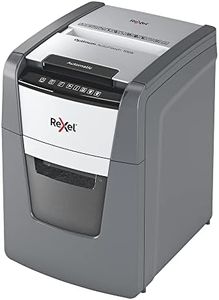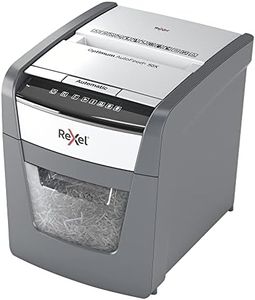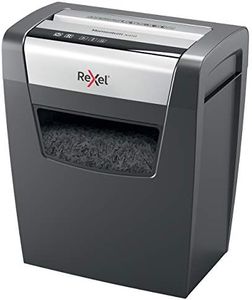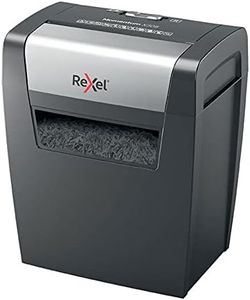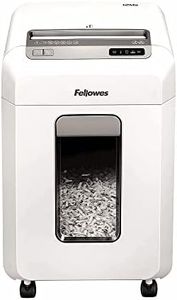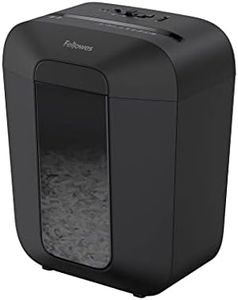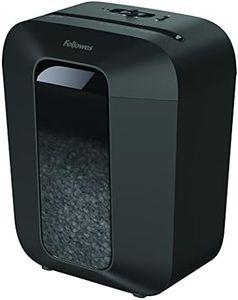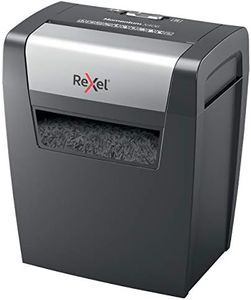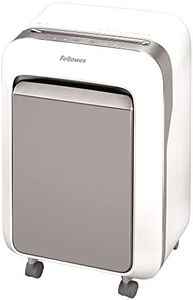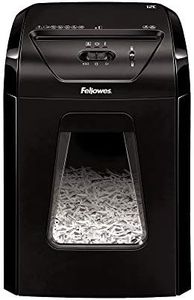We Use CookiesWe use cookies to enhance the security, performance,
functionality and for analytical and promotional activities. By continuing to browse this site you
are agreeing to our privacy policy
10 Best Paper Shredders
From leading brands and best sellers available on the web.Buying Guide for the Best Paper Shredders
Choosing the right paper shredder can help you keep your sensitive documents secure, prevent identity theft, and manage paper waste more efficiently. The key is to understand your shredding needs—think about how much you need to shred, how often, and what kind of materials besides paper you might want to destroy. By learning about the main features and deciding which ones match your usage, you’ll be able to pick a model that’s safe, effective, and convenient for your daily routine.Shred Type (Cut Style)Shred type determines how the paper is cut and how secure the shredded bits are. The main types are strip-cut, cross-cut, and micro-cut. Strip-cut shreds paper into long strips, which is faster and suitable for non-sensitive documents. Cross-cut provides a higher level of security by cutting the paper both horizontally and vertically into small pieces, making it harder to piece documents back together. Micro-cut offers the highest security, turning documents into tiny confetti-like particles, good for highly sensitive information. If you’re just discarding old bills and junk mail, strip- or cross-cut may be enough. For private or personal/sensitive details, favor cross-cut or micro-cut.
Sheet CapacitySheet capacity tells you how many sheets you can shred at once. Lower-capacity shredders handle 1–6 sheets, which is ideal for occasional home use. Mid-range models can shred 7–12 sheets, suitable for small offices or regular personal use. High-capacity shredders manage 13 sheets or more, perfect for bulk shredding in busy settings. Match the shredder’s capacity to your workload; if you often deal with piles of documents, a higher capacity will save you time.
Run Time and Cool-Down TimeRun time is how long a shredder can work continuously before needing to cool down, while cool-down time is how long you have to wait before using it again. Light-duty shredders may run for a few minutes before a 30-minute cool-down, while heavy-duty versions can last 20 minutes or more with shorter rest periods. If you shred documents only occasionally, a short run time will suffice. For frequent or large jobs, look for longer run times and shorter cool-downs.
Bin Size (Wastebasket Capacity)Bin size tells you how much shredded paper the machine can hold before emptying. Smaller bins (3–5 gallons) are fine if you shred only a little at a time. Mid-sized bins (6–9 gallons) mean you won’t have to empty as often, good for home offices. Large bins (10 gallons and up) are best for shared spaces or constant shredding. If you dislike frequent emptying or have a lot to shred, opt for a bigger bin.
Ability to Shred Other MaterialsSome shredders can handle more than just paper—think staples, paper clips, credit cards, or CDs. Light home models may accept only paper, while more robust versions can destroy plastic cards and thicker items. If you regularly need to dispose of old cards or disks, make sure the shredder is rated for those materials.
Safety FeaturesShredders may come with safety options like auto shut-off if hands are near the opening, safety locks, or jam protection. Basic shredders may lack these, while mid to high-end models can provide extra peace of mind, especially if children or pets are around. Decide what safety features you need based on your household and concerns.
Noise LevelNoise level tells you how loud the shredder is when in use. Home models are often quieter, suitable for shared or quiet environments. More powerful models might be noisier. If you need a peaceful workspace or won’t annoy others nearby, look for a low-noise rating.
